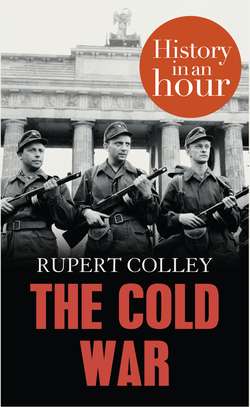Читать книгу The Cold War: History in an Hour - Rupert Colley - Страница 6
ОглавлениеThe End of the Second World War: Apocalypse
Winston Churchill, Britain’s wartime prime minister, said of Stalin, he would ‘work with the Devil if it would help defeat Hitler’. Towards the end of the Second World War, with the defeat of Hitler’s Germany only a matter of time, the ‘Big Three’ – Churchill, Joseph Stalin and the US president, Franklin D. Roosevelt (pictured below) – met a number of times to discuss their strategy for winning the war and the make-up of a post-war Europe. US soldiers, advancing on Berlin from the west, and Soviet soldiers from the east, met on the River Elbe on 25 April 1945. Amidst the handshakes and toasts they promised everlasting friendship between the two nations. But while the soldiers visualized a bright future of camaraderie and peace, the Big Three had already begun carving Europe up between the East and the West.
Churchill, Roosevelt and Stalin, February 1945
With the Red Army taking Berlin and indulging in an orgy of mass rape against German women, Hitler, deep within his bunker, committed suicide on 30 April. A week later, on 7 May, Germany surrendered unconditionally. The war – in Europe, at least – was over.
In the Far East, Japan, although on the brink of starvation and collapse, its armed forces shattered, refused to do likewise. The Americans, having successfully tested the first atomic bomb on 16 July, used this new apocalyptic weapon on the Japanese city of Hiroshima on 6 August, followed, three days later, with a second on Nagasaki. Finally, the Japanese surrendered. After six years and a day, the Second World War had ended. And the Cold War began.
